Archivo de noticias y eventos
501 - 550 de un total de 2404
También puede acceder a la lista de noticias publicadas en los medios relacionadas con el Instituto de Astrofísica de Andalucía - CSIC.
Pages
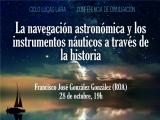
|
28/10/2021 - 19:00
La navegación astronómica y los instrumentos náuticos a través de la historia Al inicio de la época de los grandes descubrimientos y de las exploraciones oceánicas, los navegantes europeos contaban con medios muy poco fiables para emprender una travesía marítima de larga duración (algunas cartas náuticas, una brújula para marcar el rumbo, técnicas rudimentarias para calcular la latitud y, desde finales del siglo XVI, la corredera para calcular la velocidad del barco). A lo largo de los siglos XVI, XVII y XVIII, se produjo... Francisco José González González |

|
24/09/2021
El IAA estrena la webserie musical “Camino a Congreso” La serie, que cuenta con la financiación de la Fundación Española para la Ciencia y la Tecnología (FECYT)-Ministerio de Ciencia e Innovación y de la Fundación Descubre, está rodada en Granada y Almería. El IAA, el Observatorio de Calar Alto, la Plataforma Solar de Almería o el parque megalítico de Gorafe son algunas de las localizaciones en las que transcurren los seis capítulos de la serie |

|
25/11/2021 - 12:30
SO. Webloquia: AYA: projects and human resources in grants managed by the Spanish State Research Agency This presentation will review data and results of the national calls for projects and human resources managed by the AYA team in the AEI: research projects (PGC and Challenges), acquisition of scientific-technical equipment, proof of concept projects and strategic projects; and human resources, predoctoral hiring FPI, Juan de la Cierva training, Juan de la Cierva incorporation, Ramón y Cajal and R+D+I technical staff. Dra. Inmaculada Dominguez |

|
27/09/2021
La contaminación lumínica ha aumentado al menos un 49% en los últimos 25 años El estudio solo incluye datos de satélites, muy limitados para la detección de la luz azul (la más contaminante), de modo que el aumento real puede ascender a un 270% a nivel global. La investigación pone de manifiesto la gravedad de un problema que, según los expertos, empeorará si el proyecto de Real Decreto para la eficiencia energética se aprueba según la propuesta actual |

|
24/09/2021
Se inaugura la exposición “AstrónomAs” El proyecto, que busca visibilizar el papel de las mujeres en la astronomía y despertar vocaciones científicas, incluye información sobre 270 astrónomas y sus áreas de investigación. El Instituto de Astrofísica de Andalucía (IAA-CSIC) se encuentra entre los patrocinadores, y varias investigadoras del IAA participan en el grupo de trabajo que ha desarrollado la exposición |

|
10/02/2022 - 12:30
A high-fidelity sky mock of DESI galaxies in the LCDM cosmology By using N-body simulations in which different cosmologies have been assumed and by comparing them with large-scale galaxy surveys, we can constrain cosmological parameters, even ruling out some cosmological models. In this talk I will describe how we use the Uchuu simulation for this purpose. Uchuu is an N-body dark matter simulation that has been created by an international team of researchers from Japan, Spain, USA, Argentina, Australia,... Julia Ereza |

|
02/12/2021 - 12:30
The PUMA project. Mergers and feedback in local ULIRGs resolved by ALMA and MUSE+AO Galaxy mergers and interactions have a key role in the evolution of galaxies, specially at high-z when they were more common than today. Mergers trigger starbursts and AGN activity, which are both regulated by negative feedback processes, as well as can turn spiral galaxies into massive quiescent objects. The local counterparts of these major interactions and mergers are local ULIRGs (L(IR)/Lsun > 1e12) which, thanks to their proximity, allow... Dr. Miguel Pereira Santaella |
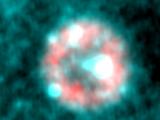
|
22/09/2021
Los restos de la supernova histórica de 1181 apuntan a que se originó por la fusión de dos estrellas Textos chinos y japoneses documentaron la aparición de una supernova en el año 1181, y ahora se localiza el remanente de aquella explosión |
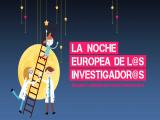
|
20/09/2021
Más de 200 actividades en la vuelta a las calles de La Noche Europea de Los Investigador@s Rutas científicas por la ciudad, actividades para niños y colegios y casi 200 actividades en las carpas del Paseo del Salón La Noche se cerrará con el espectáculo Alfonso X el Sabio, que aúna música, astronomía e historia con guion del IAA-CSIC |

|
07/10/2021 - 12:30
X-ray binary accretion states in AGN? Sensing the accretion disc of supermassive black holes with mid-IR nebular lines Accretion states, which are universally observed in stellar-mass black holes in X-ray binaries, are also anticipated in active galactic nuclei (AGN). This is the case at low luminosities, when the jet-corona coupling dominates the energy output in both populations. Previous attempts to extend this framework to a wider AGN population have been extremely challenging due to heavy hydrogen absorption of the accretion disc continuum and starlight... Dr Juan Antonio Fernández Ontiveros |

|
03/02/2022 - 12:30
SO Webloquio: The Milky Way's young substellar population Young clusters and star forming regions are home to a large number of substellar objects with masses below the hydrogen-burning limit at 0.075 MSun. Most of our knowledge about their populations comes from nearby regions (d lower 400 pc), where we find consistent formation rates of 2-5 young brown dwarfs per 10 newborn stars. Brown dwarf theories, on the other hand, predict that high gas or stellar densities, as well as the presence of massive... Dra Koraljka Muzic |

|
11/11/2021 - 12:30
SO Webloquio: Stellar winds and their effects on exoplanets As the wind outflows from a star, it permeates the interplanetary medium, interacting with any planet it encounters. In this talk I will review some recent works on winds of low-mass stars and discuss the impact stellar winds can have on surrounding exoplanets. Compared to the physical interactions known to take place between the solar wind and the solar system planets, the interaction between stellar winds and exoplanets can be significantly... Dra Aline Vidotto |

|
09/09/2021
El IAA participa en el desarrollo de ‘Uchuu’, la simulación más exacta y completa del universo Un equipo internacional de investigadores ha desarrollado la simulación más realista del universo lograda hasta la fecha. La creación, bautizada como Uchuu (que significa universo en japonés) ha sido posible gracias a ATERUI II(Japón), el superordenador más potente del mundo, construido por el Observatorio Astronómico Nacional de Japón (NAOJ, por sus siglas en inglés) para facilitar la comprensión de distintos fenómenos astronómicos desde un... |
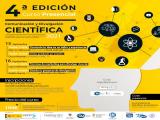
|
15/09/2021 - 16/09/2021
IV Course on Scientific Dissemination Techniques Granada |

|
18/11/2021 - 12:30
SO Webloquio: MOSAIC: the multi-object spectrograph for ELT MOSAIC will be the Multi-Object spectrograph for the ELT telescope. First light for this instrument is foreseen for 2031. MOSAIC is driven by scientific cases that include the study of the first galaxies in the Universe, the evolution of the large scale structure, resolved stellar populations beyond the Local Group, and the formation of exo-planets in different environments, among others. The instrumental concept includes visible spectrographs (... Dr Lidia Tasca |

|
02/09/2021 - 15:00
The Lucy mission: exploring the unexplored Lucy is planned to launch in 2021 on a United Launch Alliance Atlas V launch vehicle, after which it will gain two gravity assists from Earth; one in 2022, and one in 2024. In 2025, it will fly by the inner main- belt asteroid (52246) Donaldjohanson, which was named after the discoverer of the Lucy hominid fossil. In 2027, it will arrive at the L4 Trojan cloud (the Greek camp of asteroids that orbits about 60° ahead of Jupiter), where it will... Dr. Adriana Ocampo |
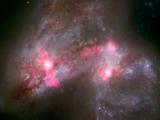
|
27/08/2021
Se obtienen las imágenes más detalladas de galaxias gracias a LOFAR, una red de 70.000 antenas El IAA-CSIC encabeza uno de los once artículos que forman un número especial de la revista Astronomy & Astrophysics sobre los resultados de LOFAR |
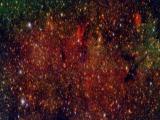
|
15/11/2021 - 19/11/2021
IAA Severo Ochoa Advanced School on Star Formation Granada |
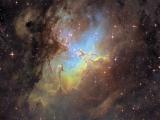
|
29/11/2021 - 03/12/2021
2nd IAA-CSIC Severo Ochoa School on Statistics, Data Mining, and Machine Learning Granada |
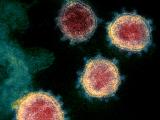
|
10/08/2021
Se diseña una técnica para detectar, sin contacto, virus en superficies Basada en el uso de imágenes hiperespectrales y en el procesado de datos con estadística avanzada e inteligencia artificial, se ha aplicado con éxito en dos modelos sintéticos del SARS-CoV-2. La investigación, que continúa en humanos, ha sido financiada por el Instituto de Salud Carlos III y ha permitido patentar una técnica capaz de analizar simultáneamente numerosas muestras sin necesidad de contacto ni de reactivos |

|
02/08/2021
Llega la lluvia de estrellas de las perseidas Se producen por el impacto en nuestra atmósfera de fragmentos de la nube de meteoroides del cometa 109P/Swift-Tuttle, y también se registran sobre la superficie de la Luna. Durante el máximo, en torno al 11 de agosto, podrán observarse hasta cincuenta perseidas por hora en lugares alejados de la contaminación lumínica |

|
29/07/2021
Pequeña fuerza, gran efecto: cómo pueden afectar los planetas al Sol El Instituto de Astrofísica de Andalucía (IAA-CSIC) participa en el desarrollo de una teoría que apoya la hipótesis de que los planetas afectan a la actividad magnética solar. Muestra cómo la pequeña influencia de los planetas podría imprimir su ritmo en un sistema como el Sol que, de confirmarse, permitiría predecir con más precisión eventos como las tormentas solares |
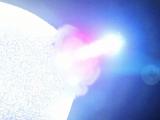
|
26/07/2021
La estrella masiva que apenas brilló al morir El IAA-CSIC participa en dos artículos que difunden el hallazgo de la explosión de rayos gamma (GRB) más breve producida por la muerte de una estrella masiva jamás detectada |

|
20/09/2021 - 23/09/2021
SO Instrumentation School: III. Beckhoff Motion Control Granada |

|
21/07/2021
El enigmático proceso de ensamblaje de la galaxia del Sombrero La galaxia del Sombrero, un extraño híbrido entre galaxia espiral y elíptica, ha sido observada en detalle para buscar indicios sobre su proceso de formación. Ha podido caracterizarse una gran estructura elíptica que rodea la galaxia, producto de una fusión menor con otra galaxia, pero persiste la incógnita sobre el origen de su forma |
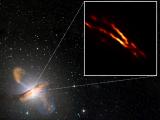
|
19/07/2021
El Telescopio del Horizonte de Sucesos (EHT) localiza el agujero negro central de la galaxia Centaurus A La colaboración del EHT, en la que participa el IAA-CSIC, muestra con un detalle único el corazón de Centaurus A, desde donde emergen unos gigantescos chorros de materia que le dan su apariencia característica |
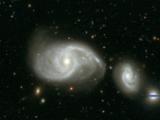
|
15/07/2021
MeerKAT descubre un grupo de galaxias escondido en una región muy estudiada Su abundancia en hidrógeno neutro apunta a que se trata de un grupo de galaxias en proceso de formación |

|
16/09/2021 - 12:30
Precision cosmology: now what? The standard cosmological model (the LCDM model) has been established and its parameters are now measured with unprecedented precision. This model successfully describes observations from widely different epochs of the Universe, from primordial nucleosynthesis all the way to the present day. However, there is a big difference between modelling and understanding. The next decade will see the era of large surveys; a large coordinated effort of... Dra. Licia Verde |
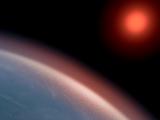
|
30/06/2021
El instrumento CARMENES halla dos nuevos sistemas planetarios formados por tierras y supertierras El Instituto de Astrofísica de Andalucía (IAA-CSIC) encabeza la detección de lo que, según apuntan los datos, es el tipo mayoritario de sistemas planetarios en torno a estrellas enanas, las más comunes en la Vía Láctea |

|
24/06/2021
Se observan nubes noctilucentes desde el Observatorio de Sierra Nevada Desde el Observatorio de Sierra Nevada (OSN), observatorio gestionado por el Instituto de Astrofísica de Andalucía, se han observado nubes noctilucentes. La presencia de este tipo de nubes se considera un indicador del cambio climático y desde hace años se observan en latitudes cada vez más bajas, y es una de las primera veces que han sido observadas desde Granada. |
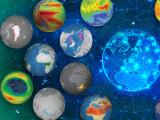
|
18/06/2021
La misión CAIRT, con participación del IAA-CSIC, candidata para el programa Earth Explorer 11 de la ESA La misión se centrará en los procesos que combinan la circulación atmosférica, la composición, la meteorología espacial y el cambio climático regional, y proporcionará observaciones críticas no disponibles con los satélites existentes o previstas |
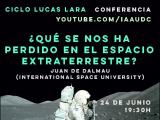
|
24/06/2021 - 19:30
¿Qué se nos ha perdido en el espacio extraterrestre? Juan de Dalmau, presidente de la International Space University y exdirector de operaciones de lanzamiento de cohetes Ariane en la Guayana Francesa, responderá a preguntas frecuentes sobre la exploración espacial Juan de Dalmau |

|
22/07/2021 - 12:30
Revealing cosmic magnetism with the Square Kilometre Array and its pathfinders Magnetism is an enigmatic but crucial element of our Universe. The structure and strength of magnetic fields are important for a full understanding of astrophysics over a tremendous range of scales: from stellar systems, to star forming regions, the properties and evolution of individual galaxies, galaxy groups and clusters, and even as a major element of the Cosmic Web. The Square Kilometre Array (SKA) promises to deliver a revolutionary view... Dr. George Heald |

|
01/07/2021 - 12:30
SO Colloquium: Interstellar planetesimals: 1I/Oumuamua and 2I/Borisov Extensive surveys of extrasolar planets and of circumstellar disks around nearby stars show that planets and dust-producing planetesimals, similar to the asteroids, Kuiper belt objects and comets in our solar system, are ubiquitous around others stars. The planetesimal population of the young solar system was very numerous initially but the majority of the objects ended up ejected due to gravitational perturbations with the planets and other... Dra. Amaya Moro-Martín |
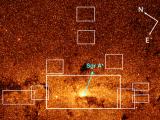
|
08/06/2021
Investigadores del IAA publican el catálogo de estrellas más detallado del Centro Galáctico El proyecto GALACTICNUCLEUS permitirá estudiar la población estelar que rodea al agujero negro supermasivo del Centro Galáctico con un detalle sin precedentes. El trabajo, liderado por el Instituto de Astrofísica de Andalucía, ofrece el más extenso censo de estrellas del núcleo galáctico registrado hasta la fecha |
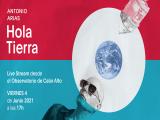
|
03/06/2021
Concierto "Hola Tierra" desde el Observatorio de Calar Alto Concierto de presentación del disco "Hola Tierra" desde el Observatorio de Calar Alto |
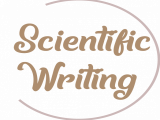
|
09/06/2021 - 10/06/2021
Scientific writing and presentation in astronomy On Line |

|
27/05/2021 - 19:00
Biología y filosofía. 50 años de "El azar y la necesidad" de Jacques Monod En el libro "El azar y la necesidad", publicado en 1970, Monod examina las implicaciones filosóficas de la biología moderna Josep Casadesús |

|
24/05/2021
La misión Juice se prepara para su prueba ambiental extrema JUICE, misión de la Agencia Espacial Europea (ESA) que se lanzará en septiembre de 2022, estudiará Júpiter y sus lunas para analizar las posibilidades del desarrollo de la vida alrededor de los planetas gigantes gaseosos. El Instituto de Astrofísica de Andalucía (IAA-CSIC) participa en dos de los instrumentos de la misión, el altímetro láser GALA y la cámara JANUS |

|
24/05/2021
El Sol de un vistazo. Concurso Educativo Internacional de Infografías El Telescopio Solar Europeo, a través del IAA-CSIC, convoca un concurso para estudiantes de secundaria para la investigación del Sol y el desarrollo de infografías sobre nuestra estrella o los instrumentos empleados para estudiarla |
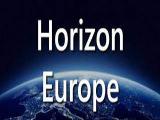
|
09/06/2021 - 09/06/2021
Horizon Europe: Workshop on RESEARCH INFRASTRUCTURE On line |
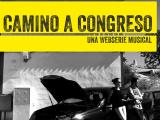
|
12/05/2021
Arranca el rodaje de Camino a Congreso, una webserie musical desarrollada por el IAA-CSIC La serie, que cuenta con la financiación de la Fundación Española para la Ciencia y la Tecnología (FECYT)-Ministerio de Ciencia e Innovación y de la Fundación Descubre, se rodará en Granada y Almería. El IAA, el Observatorio de Calar Alto, la Plataforma Solar de Almería o el parque megalítico de Gorafe son algunas de las localizaciones en las que transcurren los seis capítulos de la serie |

|
21/06/2021 - 25/06/2021
English for Academic Purposes - an online workshop series for young researchers On line |

|
08/06/2021 - 16:00
K-band interferometric imaging of the M-type Mira star ‘R Car’ The final stage of low to intermediate-mass stars, also known as the asymptotic giant branch (AGB), presents circumstellar envelopes (CSE); however the mechanisms that lead to the formation of these structures, at least in M-type AGBs, are still not well understood. In order to grasp the characteristics of the CSE, it has been found that the CO molecule plays an important role due to its stability against dissociation, making it a tracer of the... M.Sc. Abel Rosales-Guzmán |

|
30/04/2021
Presentación del proyecto Hola Tierra El Instituto de Astrofísica de Andalucía (IAA-CSIC) acoge la presentación del proyecto del músico Antonio Arias a partir del poemario del astronauta Al Worden. El proyecto, que cuenta con la participación del Instituto Cervantes y el IAA-CSIC, incluye un disco, un libro y un documental |

|
29/04/2021
Estreno del documental 'Más allá de las estrellas. Fotografiando un agujero negro' Estreno del documental 'Más allá de las estrellas. Fotografiando un agujero negro' |
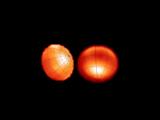
|
26/04/2021
Se desarrolla un método para estudiar las estrellas enanas blancas distorsionadas El IAA-CSIC encabeza un estudio que permitirá determinar las propiedades de las estrellas que, bien por rápida rotación o por hallarse en un sistema doble muy compacto sujeto a fuertes fuerzas de marea, muestran forma achatada |
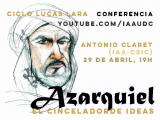
|
29/04/2021 - 19:00
Azarquiel, el cincelador de ideas La historia de la ciencia en España nunca ha sido un tema valorado en su justa medida, incluso por los propios científicos españoles en la actualidad. En esta charla nos centraremos en la figura de Azarquiel, representante de la ciencia del medievo . Antonio Claret |

|
16/04/2021
Nace OPTICON-Radionet PILOT (ORP), la mayor red de astronomía de Europa Dos redes de astronomía se unen para formar la red colaborativa de astronomía terrestre más grande de Europa |

|
15/04/2021
Convocatoria de los premios "Granada, Ciudad de la Ciencia y La Innovación" Este año, como novedad, se ha añadido un nuevo Galardón a la Divulgación Científica y un Premio especial a la implicación en la pandemia |